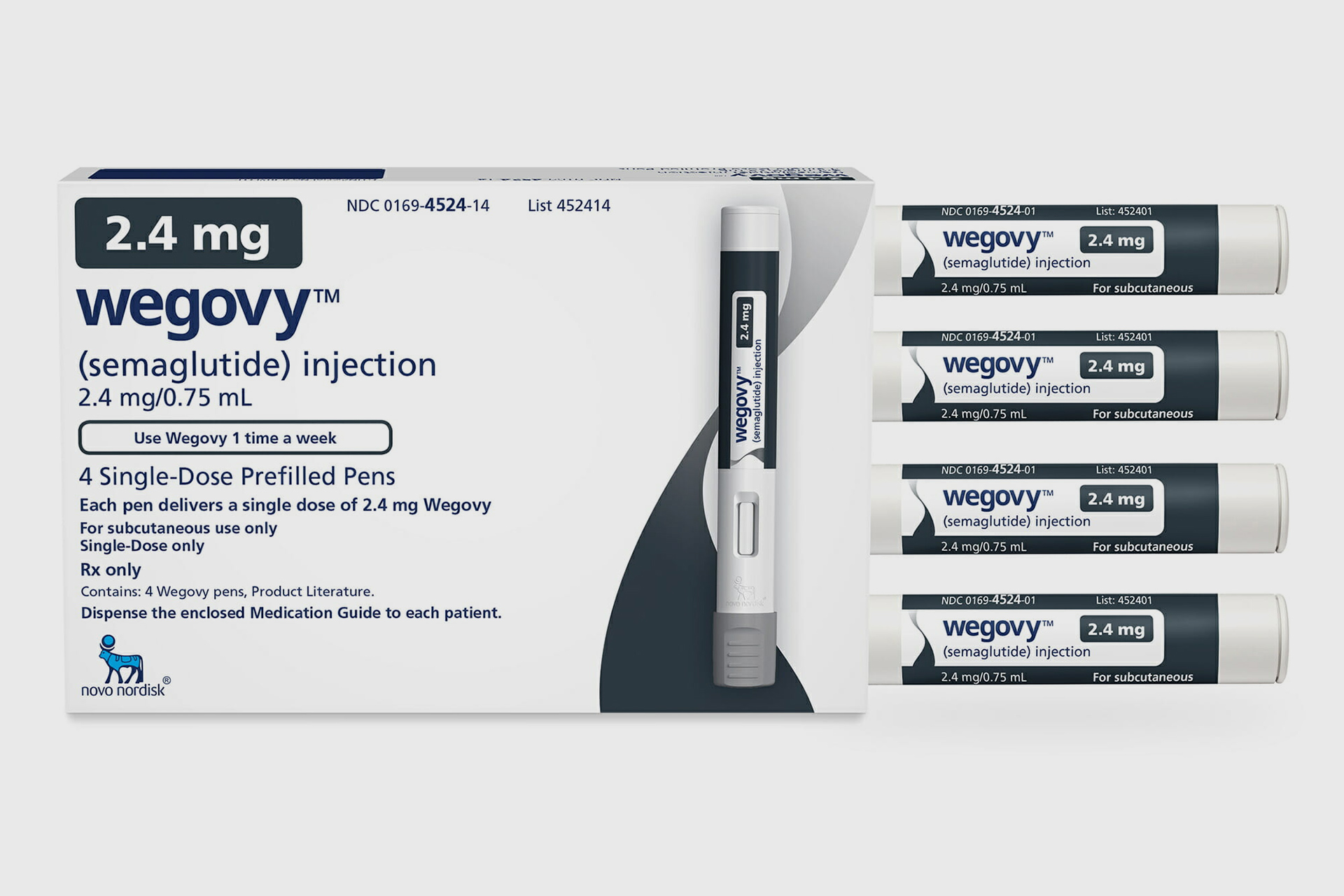The US Food and Drug Administration approved a new drug for weight loss, its trade name is "Wegovy", and its scientific name is "semaglutide", so how does this drug work?
What is the expected weight loss using it?
And what are its side effects?
How much does it cost?
Wiggoi is the first weight loss treatment approved by the US Food and Drug Administration since 2014, according to a statement from the agency.
Media reports described him as changing the game, meaning that he makes a big change in the issue of drugs and slimming.
Wigovy Real Estate Authority
Wigovy comes as an injection, and is given under the skin.
What caliber wigovy?
2.4 mg of the active ingredient, semaglutide, is injected once a week.
Who can benefit from Wigovy?
Patients with a body mass index (BMI) of 27 or greater, and who have at least one weight-related condition such as high blood pressure, type 2 diabetes, or high cholesterol.
The body mass index is calculated by dividing the weight in kilograms by the square of the height in metres.
Patients with a body mass index of 30 or more.
How does Wigovy work?
Wigovy works by mimicking a hormone called glucagon-like peptide-1 (GLP-1) that targets areas of the brain that regulate appetite and food intake.
And people who used the drug lost up to 20% of their weight.
Is it enough to take an injection and goofy just to lose weight?
No, the people who used Wego and lost weight also followed a diet and exercise program.
And the use of Wigofy should be in combination with making healthy changes in eating and movement habits.
This medication helps control appetite, and may be the starting point for change, but the person must change unhealthy eating habits and exercise physical activity.
How much does Wigovi cost?
The cost of treatment is expected to be around $1,200 to $1,300 per month.
What are the side effects?
The most common Lugovi side effects include:
Nausea
diarrhea
vomiting
constipation
abdominal pain
Headache
exhaustion
Indigestion
dizziness;
Flatulence and gas
burping
Hypoglycemia in patients with type II diabetes
Inflammation of the stomach and intestines
Gastroesophageal reflux disease
The dose of the drug should be increased gradually over 16 to 20 weeks to 2.4 mg once a week to reduce gastrointestinal side effects.
Precautions that prevent the use of the drug
Semaglutide carries a warning indicating that it has been linked to medullary thyroid cancer, but this adverse effect has only been reported in animal studies (not humans).
However, anyone with a history of rare thyroid cancer should avoid the drug.
People with a rare condition called multiple endocrine neoplasia syndrome type 2 (MEN2) should not take the medicine.
Patients with a history of pancreatitis.
Those with a history of gallbladder disease.
Patients who have had a severe allergic reaction to semaglutide or to any of the other ingredients of Wigovy.
Other caveats
If Wigovy is used with insulin or with a substance that causes insulin release, patients should talk to their healthcare provider about possibly lowering the dose of insulin or insulin-stimulating medication to reduce the risk of low blood sugar.
Health care providers should monitor patients with kidney disease, diabetic retinopathy, depression, or suicidal behavior or thoughts (it may have effects on mood).
The trade name of the new drug is "Wegovy", and the scientific name for it is "semaglutide" (communication sites)
How much did people who used Wiggoi lose?
Novo Nordisk, the manufacturer of the drug, conducted several studies on the safety and efficacy of a 2.4-milligram dose, and the largest study was of 68 weeks duration and included nearly 2,000 obese adults who did not have diabetes, and found that people who took 2.4 milligrams of semaglutide per week - With participation in a diet and exercise program - they lost significantly more weight than those who made the same lifestyle changes but were injected with a placebo, according to a report by Barbara Brody for AARP.
Half of the participants in the wigovy group were able to lose at least 15% of their weight, and nearly a third managed to lose 20%. In contrast, people in the placebo group lost only about 2.4% of their weight.
"The data is so amazing, we have a limited amount of tools in our toolbox when it comes to... It's a treatment for overweight and obesity, and the addition of semaglutide is excellent news."
How does Wigovy outperform other drugs?
Currently, there are only a few other FDA-approved weight-loss medications on the market, says Dr. W. Timothy Garvey, a professor at the University of Alabama at Birmingham, and none of them work nearly as well as semaglutide.
Semaglutide suppresses appetite by acting in the brain, and with appetite control it is likely that a person will eat less and choose foods that are not as high in calories.
Another FDA-approved weight-loss drug that is very similar is liraglutide, sold under the brand name Saxenda, made by the same manufacturer and also sold as a diabetes drug under the brand name Victoza.
Although both are mimics of a hormone called peptide-1, liraglutide is only half as effective as a 2.4-milligram dose of Wigovy, says Garvey.
However, Garvey cautioned that Wigovy is not a quick or easy fix. It helps patients stick to a reduced-calorie diet. It's not a magic pill, and you still have to pay attention to lifestyle choices and continue to be physically active.
What Wegoffe does is make it easier to stick to the diet and exercise changes necessary to lose weight, which can be very difficult for people who are overweight or obese.
"It's not their fault," says Garvey. "The mechanism of the disease (obesity) makes them feel hungry, so even if they manage to lose weight, they usually gain it back."

